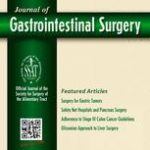Repici A, Fumagalli U, Malesci A, Barbera R, Gambaro C, Rosati R
J Gastrointest Surg. 2010 Jan; 14(1):1-6.
BACKGROUND:
Several endoscopic antireflux therapies have been proposed to reduce the need for chronic medical therapy or laparoscopic fundoplication for gastroesophageal reflux disease (GERD). Aim of this study was to evaluate the short- and mid-term clinical results of endoluminal fundoplication (ELF) with EsophyX.
PATIENTS AND METHODS:
From June 2006 to April 2008, 20 patients were enrolled in the study. All the ELFs were performed under general anesthesia.
RESULTS:
The mean duration of the procedure was 63 min (range 38-105). A median of 14 fasteners was placed. There were no major intraoperative complications. Two patients developed early complications and were treated conservatively. Four patients underwent, within the first year post-ELF, a laparoscopic fundoplication because of persistence of symptoms. One patient was lost to follow-up between 6 and 12 months. Among the other 15 patients who completed 12 months follow-up, the GERD health-related quality of life score decreased from a median of 40 to a median of 10 (p < 0.05), and seven patients were still off proton pump inhibitor. An improvement in esophageal acid exposure was recorded in 16.6% of patients, while in 66.7%, it worsened.
CONCLUSIONS:
ELF induced improvement of GERD symptoms and patients quality of life in a subgroup of patients with a reduced need for medication. However, it did not significantly change esophageal acid exposure in these patients. The need for revisional standard laparoscopic fundoplication was high.
Link to abstract on PubMed: Repici A, et al; J Gastrointest Surg. 2010 Jan; 14(1):1-6.


